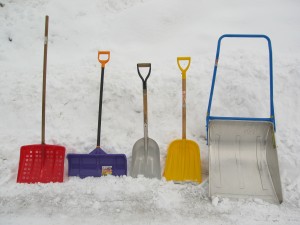The winter season brings with it a whole slew of new work injury risks in addition to the ones present in the workplace year round. The cold weather increases accidents related to slipping, cold-related injuries, and snow shoveling. Employers may find the need to plan for contingencies, and work injury risks around the building should also be considered and identified.
Winter months cover everything in sleet, snow, slush, and ice—which make for some dangerously slippery roads and sidewalks. All of this can be tracked from the outside into the workplace, which can cause puddles that lead to slip and fall work injury with complications like head injuries, fractures, and soft-tissue bruising. Use salt and sand to remove all snow on the walkways around the building, but watch for thawing and refreezing conditions because second and third applications may be needed. Place non-skid mats at each exterior doorway to reduce snow tracking, and always place signage around puddles to avoid work injury at the office.
Snow removal and the risk of a work injury
Some workplaces have employees whose duties it is to shovel snow on the premises—and it should be no surprise to anyone that the majority of winter work injury (especially back injuries) occur while shoveling. Pushing and carrying heavy things on concealed ice can cause slippage and throw your back out. Workers who shovel should take frequent breaks or at least consider investing in a snow blower to avoid a work injury. Take caution, though—there is an increase in the number of amputations and finger lacerations during the winter months with the popularity of snow blowers, and these injuries tend to occur when people use their hands to clear a clogged auger; and it would be hard to recover from a work injury like that.
Employees who have to work outside have serious risk of hypothermia, frostbite, and other dangerous health conditions. While low temperatures are certainly a factor in the risk—be aware that it does not have to be below freezing to sustain frostbite or hypothermia—much of it has to do with exposure to cold water and wind speed. These employees should work during the warmest part of the day possible and be allowed to take frequent breaks to reheat their internal temperature to escape the icy grip of an outdoor work injury. Hydration is also key as your body works harder to keep warm than it does to keep you cool. The warming process along with breathing in drier air can lead to dehydration so be sure to regularly drink warm liquids.
If injured at work in the Saint Louis area, call the work injury team at Kullmann, Klein & Dioneda. We can help ensure you get the workers’ comp benefits you deserve. Contact us today at 314-862-7222.

